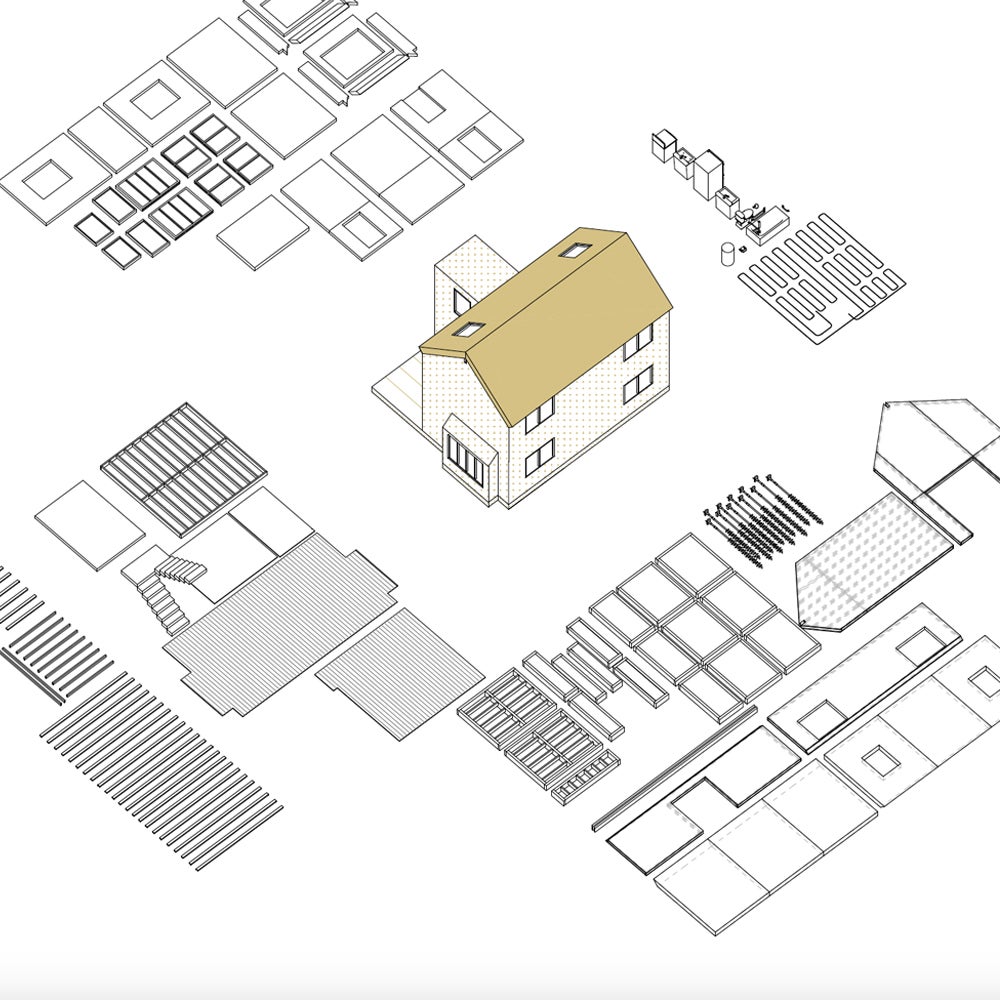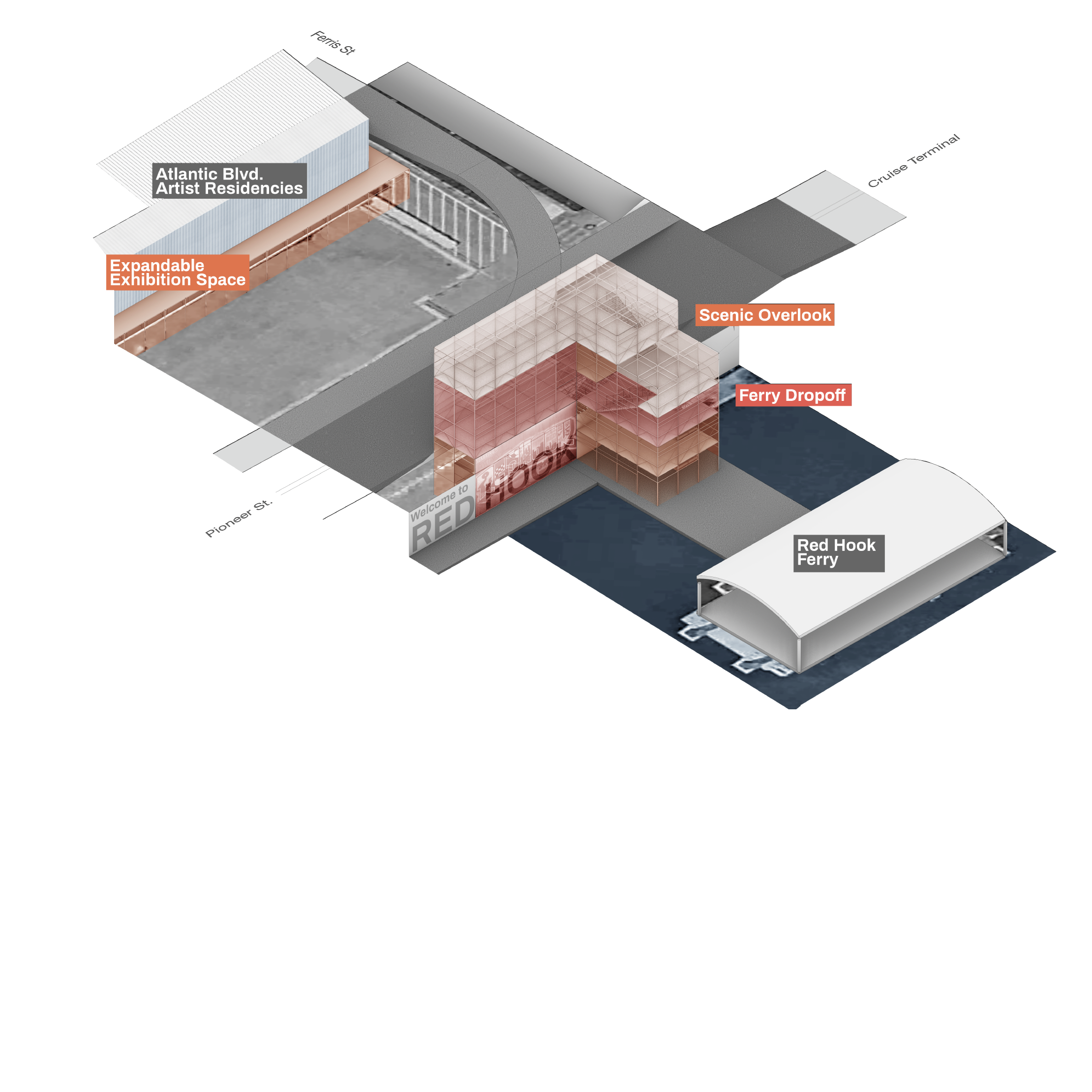
RECAP: THE NATIONAL BUILDING MUSEUM'S 'INTERSECTIONS' SERIES BRINGS TOGETHER MABEL O. WILSON, MALO A. HUTSON AND GLENN LARUE SMITH IN CONVERSATION


Launched in mid-September this year and running through mid-December, The National Building Museum is bringing leading Black voices in design, art, and architecture to the Museum for INTERSECTIONS: Where Diversity, Equity and Design Meet, dynamic discussions about culture, equity and representation in the built world through the lens of design. The programming is a part of the Museum’s ongoing signature series, Equity in the Built Environment, which focuses on the relationship between equity, social justice and our built environment.
Jacquelyn Sawyer, Vice President of Education and Engagement for the National Building Museum, said, “We are thrilled to give a platform to these influential Black voices who speak to the role of culture and identity in design and the built environment and are underrepresented within the industry.”
For the third event in the series, the National Building Museum hosted Nancy and George E. Rupp Professor of Architecture, Planning and Preservation at Columbia University Mabel O. Wilson (BSArch '85, and 2020 A-School Distinguished Alumni Award Recipient) to present "…at the Intersection of Representation and Tradition" on the evening of Friday, September 23, 2022.
Wilson was joined by Malo A. Hutson, Dean of the UVA School of Architecture and Edward E. Elson Professor, in a spirited conversation moderated by Glenn LaRue Smith, landscape architect and Co-Founder and Design Director of PUSH Studio.
The evening's event began with Wilson giving a powerful and moving presentation on a single project in her wide-reaching and renowned body of work: The Memorial for Enslaved Laborers at the University of Virginia. She engaged an audience of designers, planners, teachers, scholars, students, and museum supporters by asking the unassuming question that laid the groundwork for the memorial: How do you build spaces for remembering?
The seemingly simple prompt was followed by a vivid and articulate narrative of the Memorial to Enslaved Laborers from its beginnings, brought to fruition through the persistent commitment of UVA students over 10 years who Wilson described as "holding the University accountable to telling the truth of its own history," to its current and ongoing role, "as a landscape that remains incomplete, that continues to tell the fragmented story of UVA's enslaved community," while re-humanizing this history for their living descendants.
Wilson shared how when she was an architecture student at UVA what was silent in the official history of the institution was the narratives about the University's antebellum period from 1817 to 1865, including its enslaved people. The Memorial to Enslaved Laborers honors the lives, labor, and perseverance of an estimated 4,000 enslaved African Americans who built and sustained daily life at UVA during that period. She described this as a "history hiding in plain sight for 155 years."
In 2016, Wilson joined the team consisting of architects Eric Höweler and Meejin Yoon, landscape architect Gregg Bleam and community facilitator and distinguished fellow Frank Dukes, who won the competition for the memorial. They were joined a year later by Brooklyn-based artist Eto Otitigbe.
For over 6 months the team engaged multiple communities, inside the University and inside the city of Charlottesville. "We heard that the memorial had to tell the unvarnished truth of the past to have any kind of legitimacy. It needed to bring the community together to learn and reflect about this very difficult history. It needed to express dualities...You can’t just show pain and suffering," said Wilson. "You also have to show the dignity and humanity of those who were enslaved. It had to be a living memorial."
Wilson described how the memorial's design decisions, from its circular form and the dimension of its diameter (at 80 feet which matches that of the iconic Rotunda), to the names inscribed on its walls and the enslaved community's historic timeline presented on its surfaces, were the result of extensive research and community conversations. The team researched black cultural forms and rituals, and black traditions and spaces of gathering, that could be translated into design, like the 'ring shout' which comes from the low country of the United States. This became a symbolic reference for the form, along with a broken shackle. The memorial is oriented northward toward the direction of freedom and its path lays out one step for each of the 48 years that enslaved people lived and worked at UVA.
Equally important was the archival research that historians uncovered through ledgers and letters, incomplete but nonetheless telling. Wilson shared with the audience, "We had to name names. We had to engage in this ledger, an archive of daily life but laced with silence and violence....We know very little details, including names, about the lives [of the approximately 4,000 enslaved peoples] held by the University during this period. We recognize all of them with something we call a 'memory mark.' The listing of names is a traditional feature of Western memorials, but given this [fragmented] archive, we had to reimagine social relations and re-humanize the experience of the enslaved.”
While sharing many more details of her expressive account of working on the project, Wilson ended her poignant presentation by going back to the leading question: How do you build spaces for remembering? She described the importance of 'careful listening' and the need for monumentality to be dematerialized in projects that are "suturing together the past from the archives and sites of slavery which still bear the traces of the physical, epistemic, and ontological violence of enslavement."
As a result of the project, which opened on Grounds in 2020, new names continue to be inscribed on the memorial as connections between descendants and ancestors have been brought forward. Wilson describes the living memorial as "a beginning, not only for remembrance but also accountability to reckon with the truth."

Dean Malo A. Hutson joined his former colleague Mabel O. Wilson following her presentation in a candid conversation led by questions posed by Glenn LaRue Smith. The following recap shares a few highlights from their dynamic interaction:
G. LaRue Smith:
Mabel, you were a student at UVA. How did this impact your work on the memorial? And Malo, when you arrived as Dean at the University, what was it like, was this a cultural shift?
M. Wilson:
College experiences shape your life. I had remarkable experience at UVA, but I never heard about the history of slavery while I was there. I already had questions about the enslaved laborers at the University well before I was part of the project. That experience in many ways shaped my life's work.
M. Hutson:
Being at Columbia prior to joining UVA, I thought I would be in New York forever. But what brought me to UVA were the conversations I had with my colleagues. They were humble and knowledgable and willing to do the work. They weren't presenting the University or the School of Architecture through rose-colored glasses — they wanted to have difficult, but necessary, conversations about its past and its present.
When my mother visited me and my family in Charlottesville, we went to the Memorial to Enslaved Laborers and she couldn't take it all in at once. It was that heavy and moving. She was weeping. As a black woman who grew up in Mississippi, she felt the duality Mabel described that was part of the initial conversations about the design of the memorial — both the pain and the sense of humanity. With my family, both have been personally felt.
G. LaRue Smith:
The memorial asks us to think about sculptural form vs. a figurative statue as a form of commemoration. Holland Cutter wrote about the work for the New York Times describing, "Power is not its language. Closure is not its goal. Active, additive remembrance is. Is this what distinguishes a memorial from a monument? A monument says: I am truth. I am history. Full stop. A memorial says, or can say: I turn grief for the past into change for the present, and I always will." Does that ring true to the experience of the memorial?
M. Hutson:
The memorial is powerful because it isn't static. Not only is it being updated with new names, but it also changes — experientially — based on the weather or the time of day. The materiality provides different readings in different lighting conditions or from closeup or far away. I've been to it many times, and for me it is a living, breathing thing and it is part of the DNA of UVA now.
Historians are constantly gathering more information to try to tell a fuller story of the enslaved community. And students, faculty, staff, visitors and residents of Charlottesville use it all the time. People are there, sitting quietly, or praying, or singing or having lunch.
It is also beautiful because it always has a visible presence. It is lit up at night. Its direct and deliberate connection to the Rotunda is so significant as the icon of the University. The memorial holds an equal space now with the Rotunda.
M. Wilson:
The issue of the figurative in design is important. The figurative statue aims to maintain power through generations, it is an expression of power. The memorial is a collective story.
G. LaRue Smith:
Mabel, can you share more about your curatorial work for the 2021 MoMA exhibition "Reconstructions: Architecture and Blackness in America"?
M. Wilson:
This was an opportunity for me to work with Sean Anderson [Associate Curator, Department of Architecture and Design, The Museum of Modern Art] to engage in the museum's art and design archive. Its focus, of course, is modernism. There are thousands of objects in its archive, but nothing by black designers. This is whiteness by design. The exhibition called to address this absence, this silence. Institutions have absence, they have missing content, and missing narratives. The show featured the work of amazing designers and artists, Emanuel Admassu, Germane Barnes, Sekou Cooke, J. Yolande Daniels, Felecia Davis, Mario Gooden, Walter Hood, Olalekan Jeyifous, V. Mitch McEwen, and Amanda Williams. Sadly it wasn't up long enough. But it generated an amazing online course accessible through Coursera.
G. LaRue Smith:
Malo, your work has long focused on urban equity and climate justice. The School of Architecture recently hired a new Associate Dean of Justice, Equity, Diversity and Inclusion. Tell me more about why 'justice' is important for the School to define as part of its values?
M. Hutson:
We are a public institution, human rights and human dignity are at the center of our values. We ask ourselves everyday to learn from what we have done and what we are doing — are we supporting all members of our community, are all of our students thriving, is everyone being heard? This can't be seen as a stand-alone project, or only a class, or the responsibility of a few individuals — it needs to be part of everything we do, together. To live up to our responsibility as a public institution, we can not be extractive. We work to be generative, a supportive and supporting community. This work isn't easy, but I am lucky to be at a place, and alongside colleagues, who genuinely care about this.
A special thank you to the National Building Museum's team in the Office of Education and Engagement: Jacquelyn Sawyer, Sheridan Small, and Apasrin Suvanasai, for making this event possible.


